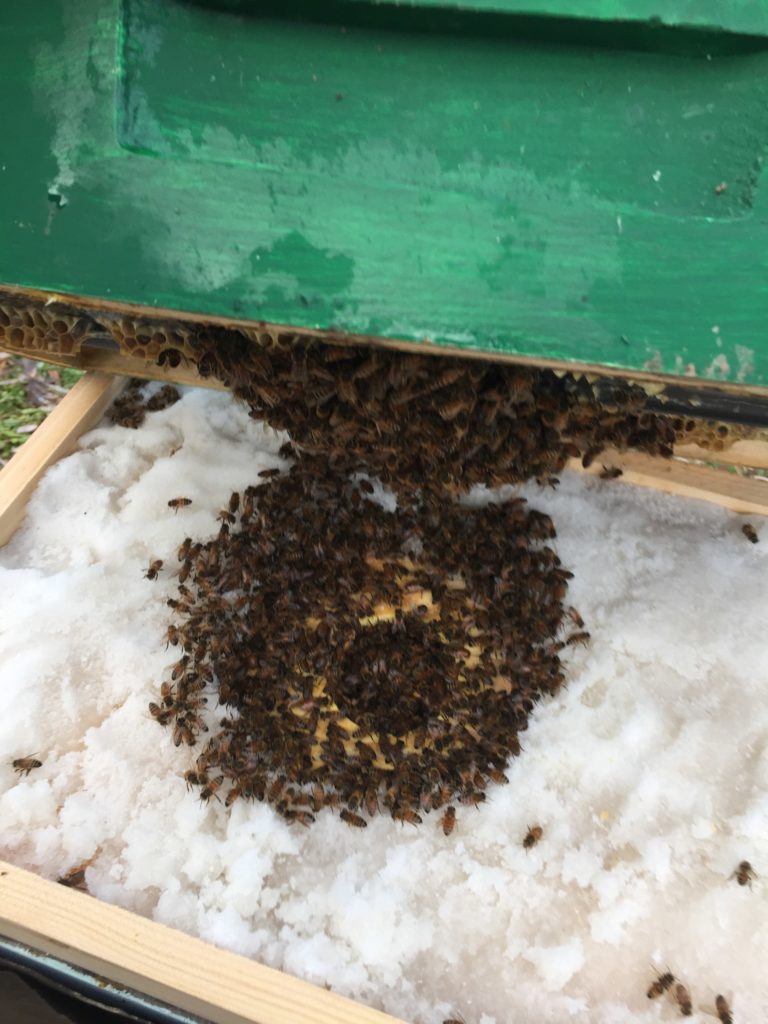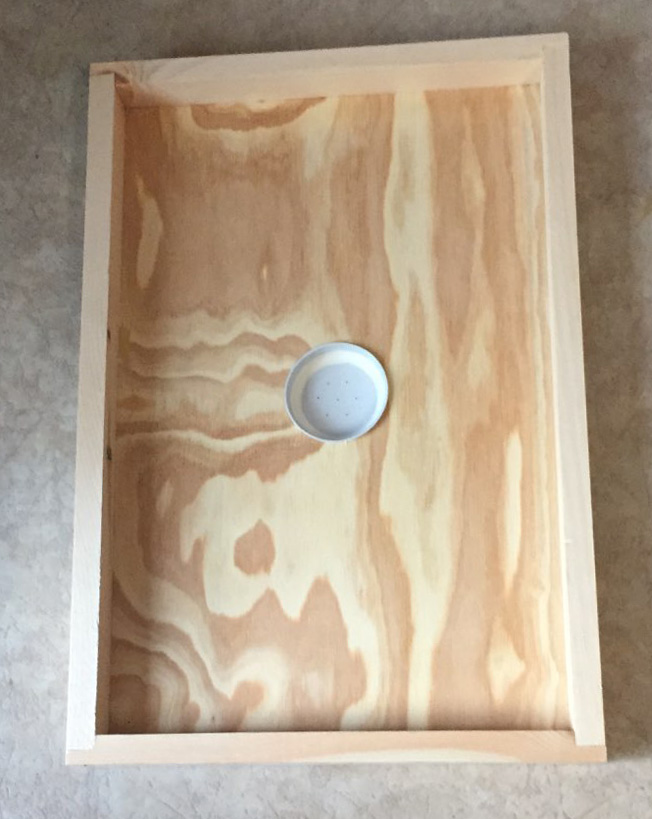Bee Lines: Life inside the winter hive
by Sam Hall –

When the temperature drops to about 45 degrees, honey bees will form a cluster inside the hive with the Queen at the center. The bees reverse or change the configuration of their wing muscles so they can sort of shiver without flying and this shivering done by thousands of bees creates heat. Similar to penguins on Antarctica, the bees at the center of the cluster are moving outward and the bees on the outside are working inward. Thereby all get some heat and some cold.
The last two weeks of February something almost magical happens in the cluster. Generally during the winter the internal temperature of the cluster is in the low 60 degrees but in the last weeks of February, they raise the temperature to about 92 degrees and the Queen starts laying in force. There was a time that we believed that the Queen stopped laying in late December for a while but modern technology has shown that while she slows down to almost no laying she still is laying some. A Queen at full tilt in the summer can lay upwards of 2000+ eggs a day. She isn’t doing this at the end of February if for no other reason then there not enough workers to tend and feed the new larvae.
The reason for this dramatic increase in her egg laying in late February is to get a large work force ready to bring in the nectar and pollen from the early blossoms in April and May. Skunk cabbage is one of the first blossoms with nectar, which occurs usually in March. In my own microclimate, I find that the pussy willows bloom generally before the skunk cabbage. There are both male and female pussy willows. Both sexes produce nectar but only the male produces pollen. In March my weeping willow trees bloom as well as the maples. To adequately handle all of the nectar and pollen being produced in March a large work force of honey bee foragers is necessary.

Another interesting thing almost magical happens. The bees in the hive before the emergence of bees from the spring build up are about 6 months old. Nurse bees are needed to care for the new larvae. Nurse bees are usually new bees a few days old. To meet the needs of the colony these elderly bees somehow are able to regress to being young nurse bees. I supposed on a human level it could be like grandparents raising grand children.
As a beekeeper to help the bees at this critical time, I want to make sure they have adequate and nutritional food. Therefore I use candy boards. A candy board is basically a wooden box with a solid bottom about 2 inches deep and is configured so it can fit on the top of a hive super. I prepare a sugar mixture to go into the candy board and also put in pollen.
I place the candy board with the candy side down directly on top of the top bars underneath the inner cover. I used to wait until a colony was directly under and up against the inner cover which is a visual indicator that they have run out of stores and are starving. I don’t do that anymore. I put the candy boards on wherever the colony is in the hive. If they have some of their own stores left they will generally use them in preference to what I furnish them.Not sure why even though I have been associated with honey bees periodically since I was a child on a farm in Allegany County, I still am filled with awe and wonder when I pull a frame of bees out of their hive. Perhaps they show me what humanity could be.